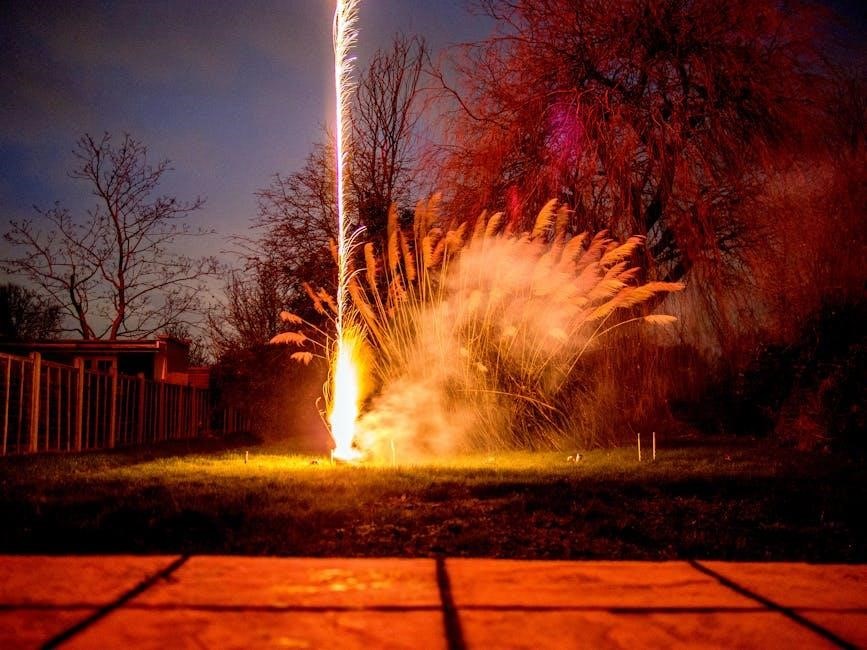Embark on a cosmic journey from your backyard! This guide offers practical steps for beginners in astronomy, focusing on identifying constellations and planets. Learn to navigate the night sky, choose your first telescope, and observe deep-sky objects. Discover the universe from home.
Backyard astronomy offers an accessible gateway to the cosmos, allowing you to explore the wonders of the universe from the comfort of your own home. No need for expensive equipment or travel to remote locations; the night sky is visible to everyone, and with a little guidance, you can unlock its secrets.
This introduction will cover the fundamentals of stargazing. Starting with understanding constellations and identifying planets, you’ll learn how to observe celestial objects with the naked eye, binoculars, or a telescope. Backyard astronomy provides a relaxing and educational hobby for all ages, fostering a deeper appreciation for the universe we inhabit.
Whether you’re a complete novice or have some prior knowledge, this guide aims to provide a clear path for beginners. It is designed to deepen your connection to the cosmos. Begin by spending time under the night sky and familiarizing yourself with the major constellations.

Essential Equipment for Beginners
Embarking on your backyard astronomy journey doesn’t require a massive investment. While advanced telescopes offer incredible views, several essential tools can enhance your stargazing experience without breaking the bank.
First and foremost, a good pair of binoculars is invaluable. They provide a wider field of view than telescopes, making it easier to locate constellations and observe larger celestial objects like nebulae and star clusters. Look for binoculars with a magnification of 7x to 10x and an objective lens diameter of 50mm.
Next, consider a planisphere or star chart. These tools help you identify constellations and locate specific stars based on the time of year and your location. Astronomy apps for smartphones and tablets are also incredibly useful, providing interactive star charts and information about celestial objects. A red flashlight is crucial for preserving your night vision while reading charts.
Identifying Constellations and Planets

Learning to identify constellations and planets is a fundamental step in backyard astronomy. Start by familiarizing yourself with the brightest and most recognizable constellations, such as Ursa Major (the Big Dipper), Orion, and Leo. These constellations serve as landmarks for finding other celestial objects.
Use a star chart or astronomy app to locate these constellations in the night sky. Pay attention to their positions relative to each other and to the horizon. As the Earth rotates, the constellations will appear to move across the sky, so it’s essential to observe them at different times of the night.
Planets, unlike stars, do not twinkle. They appear as steady points of light and often shine brighter than surrounding stars. Venus is usually the brightest planet, followed by Jupiter and Mars. Use astronomy apps to track the positions of the planets and identify them based on their color and brightness.
Using Star Charts and Apps
Star charts and astronomy apps are invaluable tools for navigating the night sky and enhancing your backyard astronomy experience. Star charts provide a visual representation of the constellations, stars, and other celestial objects visible at a particular time and location. They typically include information on the brightness and position of these objects, making it easier to locate them in the sky.
Astronomy apps offer a more interactive and dynamic way to explore the cosmos. These apps use your device’s GPS and compass to identify celestial objects in real-time. Simply point your device at the sky, and the app will display the names and information about the stars, planets, and constellations you are viewing.
Many astronomy apps also include features such as augmented reality, which overlays virtual constellations onto the real sky, and night mode, which reduces screen brightness to preserve your night vision. Experiment with different star charts and astronomy apps to find the ones that best suit your needs and preferences.
Dealing with Light Pollution
Light pollution, the excessive and misdirected artificial light, poses a significant challenge to backyard astronomy. It obscures faint celestial objects and reduces the contrast between the stars and the background sky. However, even in urban environments, there are steps you can take to mitigate the effects of light pollution.
Firstly, choose your observing location carefully. Look for areas with minimal direct light, such as parks or open fields away from streetlights. Shield your eyes from direct light sources using a hat or your hand. Allow your eyes at least 20-30 minutes to adapt to the darkness, as this will significantly improve your ability to see faint objects.
Consider using light pollution filters, which block certain wavelengths of light commonly emitted by artificial sources, enhancing the visibility of nebulae and other deep-sky objects. Check your local regulations and advocate for responsible outdoor lighting practices in your community. Every effort to reduce light pollution helps preserve the beauty of the night sky for everyone.

Choosing Your First Telescope
Selecting your first telescope is an exciting step into backyard astronomy, but it can also feel overwhelming. Several factors should influence your decision, including budget, intended use, and observing location. Refractor telescopes, with their lenses, are excellent for planetary viewing and offer sharp images. Reflector telescopes, using mirrors, provide larger apertures for gathering more light, making them suitable for observing faint deep-sky objects.
A Dobsonian telescope is a type of reflector known for its large aperture and simple, user-friendly design, ideal for beginners on a budget. Consider the telescope’s aperture, which determines its light-gathering ability. A larger aperture allows you to see fainter objects. Also, consider the portability of the telescope, especially if you plan to transport it to dark-sky locations.
Avoid inexpensive department store telescopes, as they often have poor optics and unstable mounts. Instead, research reputable brands and read reviews from experienced astronomers. Remember, the best telescope is the one you will use most often.
Observing Deep Sky Objects
Venturing beyond our solar system opens up a universe of deep-sky objects (DSOs). These faint and distant wonders include galaxies, nebulae, and star clusters, offering breathtaking views through a telescope. To observe DSOs effectively, a dark sky is crucial, minimizing light pollution for better contrast.
Start by locating well-known DSOs like the Orion Nebula (M42) or the Andromeda Galaxy (M31), easily visible with binoculars or a small telescope. Use star charts or astronomy apps to guide your search. Patience is key, as DSOs often appear as faint smudges of light.
Experiment with different eyepieces to find the optimal magnification for each object. Lower magnifications provide a wider field of view, while higher magnifications reveal finer details. Consider using filters, such as light pollution filters or narrowband filters, to enhance contrast and block unwanted light. Remember to allow your eyes to adjust to the darkness for at least 20-30 minutes to maximize your observing capabilities. Keep detailed observing logs to track your progress and refine your techniques.

Astrophotography for Beginners
Astrophotography, capturing the beauty of the night sky, is accessible to beginners with simple equipment. Start with a DSLR camera and a tripod for wide-field shots of constellations and the Milky Way. A remote shutter release minimizes vibrations, ensuring sharper images.
For capturing planets and brighter deep-sky objects, consider using a telescope with an adapter to attach your camera. Begin with short exposures to avoid star trails, gradually increasing exposure times as you gain experience. Mastering focusing is crucial; use the camera’s live view feature to zoom in on a bright star and fine-tune the focus.
Stacking multiple images, a technique called “image stacking,” reduces noise and enhances details. Free software like DeepSkyStacker can align and combine your images. Post-processing software, such as GIMP or Photoshop, allows you to adjust brightness, contrast, and color balance to bring out the hidden details in your astrophotographs. Don’t be afraid to experiment and learn from your mistakes.
Joining an Astronomy Community
Connecting with fellow astronomy enthusiasts enhances your stargazing experience. Local astronomy clubs offer a wealth of knowledge, guidance, and observing opportunities. These clubs often host star parties, workshops, and lectures, providing hands-on learning experiences. Attending star parties allows you to observe alongside experienced astronomers, learn about different telescopes, and share your passion for the night sky.
Online astronomy forums and social media groups provide a virtual community where you can ask questions, share observations, and learn from others worldwide. These platforms are excellent resources for troubleshooting equipment issues, discussing observing techniques, and staying updated on astronomical events.
Consider joining a specialized group, such as an astrophotography club, to connect with individuals who share your specific interests. These groups often organize imaging sessions, provide tutorials, and offer feedback on your astrophotographs. Engaging with an astronomy community fosters a sense of camaraderie and accelerates your learning journey. Sharing experiences and knowledge enriches your appreciation for the cosmos.
